PsychNewsDaily Publishers
100 Summit Drive
Burlington, MA, 01803
Telephone: (320) 349-2484
PsychNewsDaily Publishers
100 Summit Drive
Burlington, MA, 01803
Telephone: (320) 349-2484
Buying wine requires vigilance to avoid counterfeits and overpriced bottles. Key indicators include label accuracy, bottle shape, vintage verification, and storage conditions.
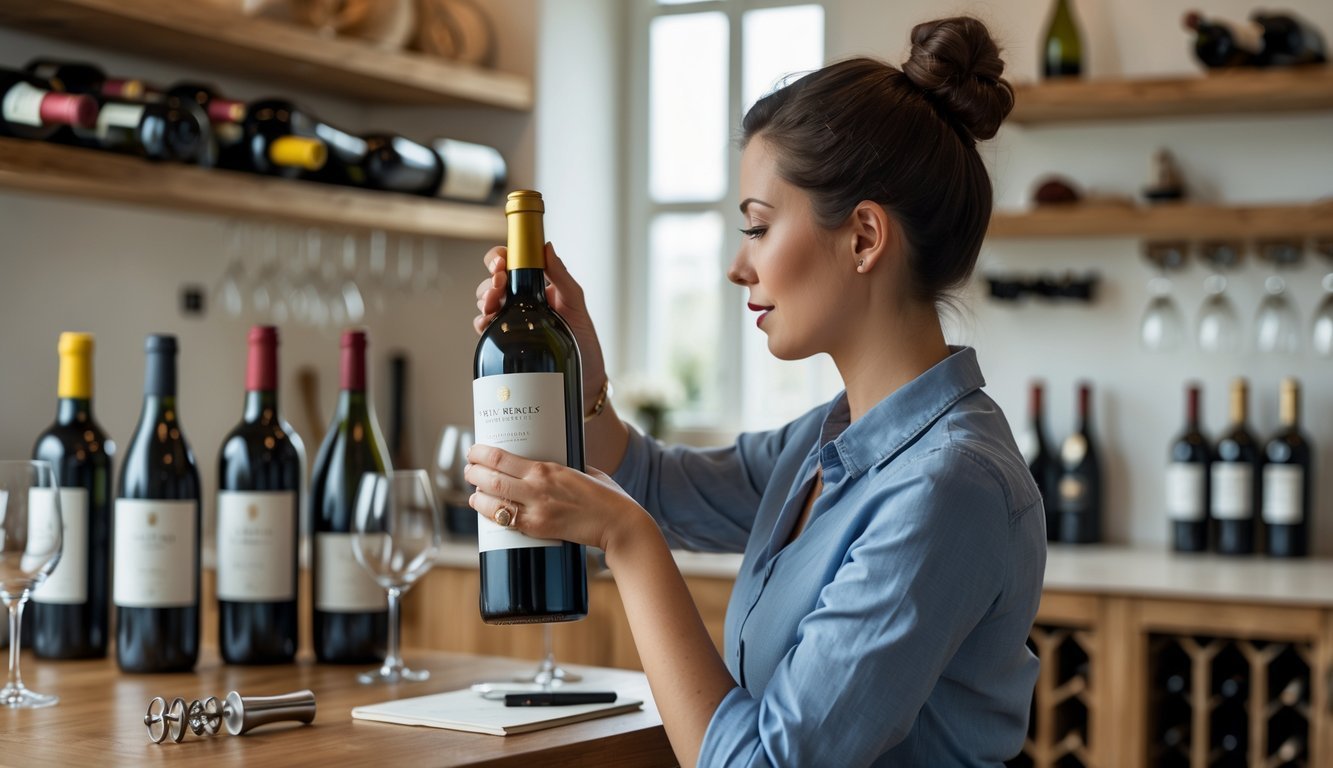
Buying wine can feel tricky, especially when you’re not sure if a bottle’s fake or just overpriced. Some bottles look legit but don’t match their price or quality, and honestly, that’s a letdown.
A few quick tricks can help you spot fake or overpriced wine and save yourself from wasting money or getting disappointed. With some simple tips, you’ll feel more confident picking out wine—whether it’s for a regular night or something special.
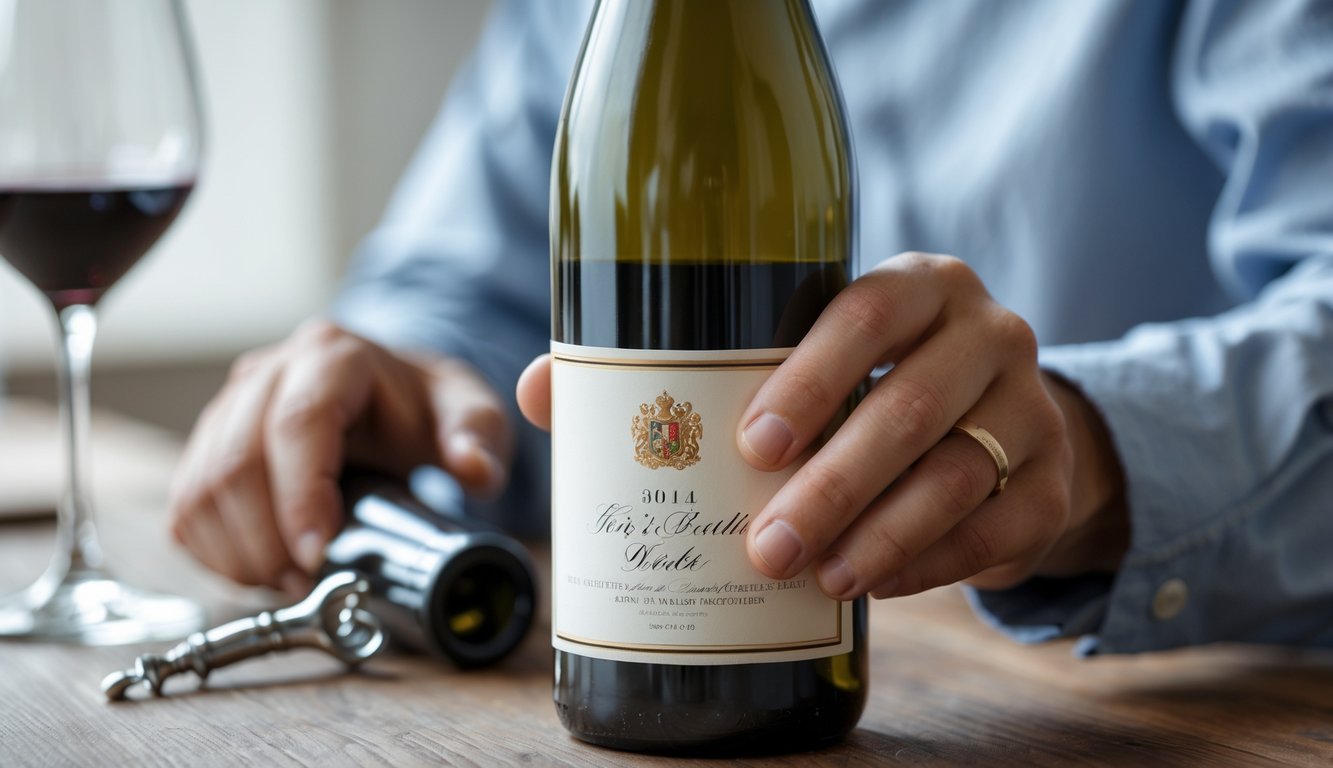
First, read the label carefully when you pick up a wine bottle. Spelling mistakes usually mean trouble. Real wineries care about their labels.
Look for weird details like mismatched fonts, blurry words, or off colors. These things might mean the bottle’s a fake or just poorly copied.
If something feels off, trust your gut. Compare the label to official images online. This quick check can save you from buying a dud.
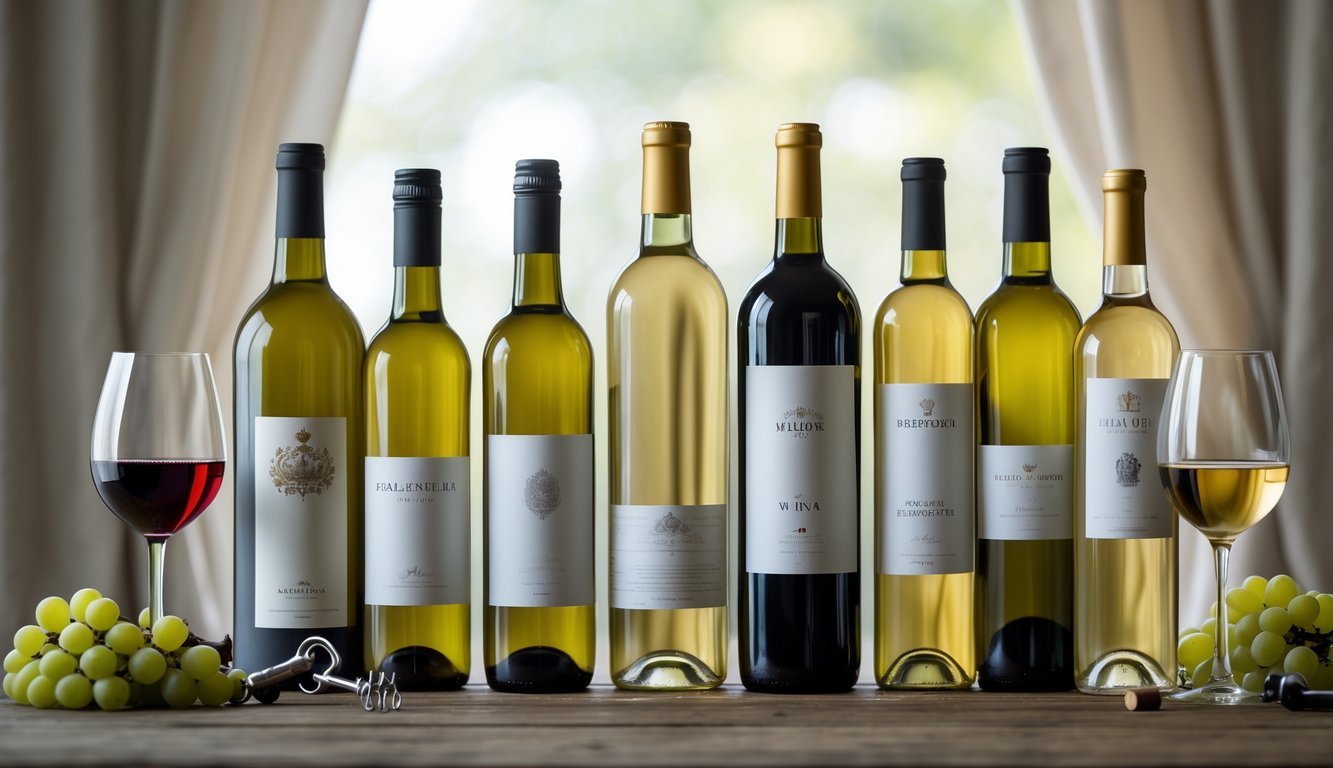
Take a second to notice the bottle’s shape and size. Most wines stick to classic shapes like Bordeaux, Burgundy, or Champagne bottles.
If a bottle looks odd or the size feels off, that’s a red flag. The shape usually matches the wine style—Burgundy bottles have round shoulders, Bordeaux are more straight.
A weird shape could mean the bottle’s fake or someone messed with it. Most wines come in 750ml bottles, so if the size doesn’t match the label, be careful.
Unusual bottles sometimes trick buyers into paying more or hide low-quality wine.
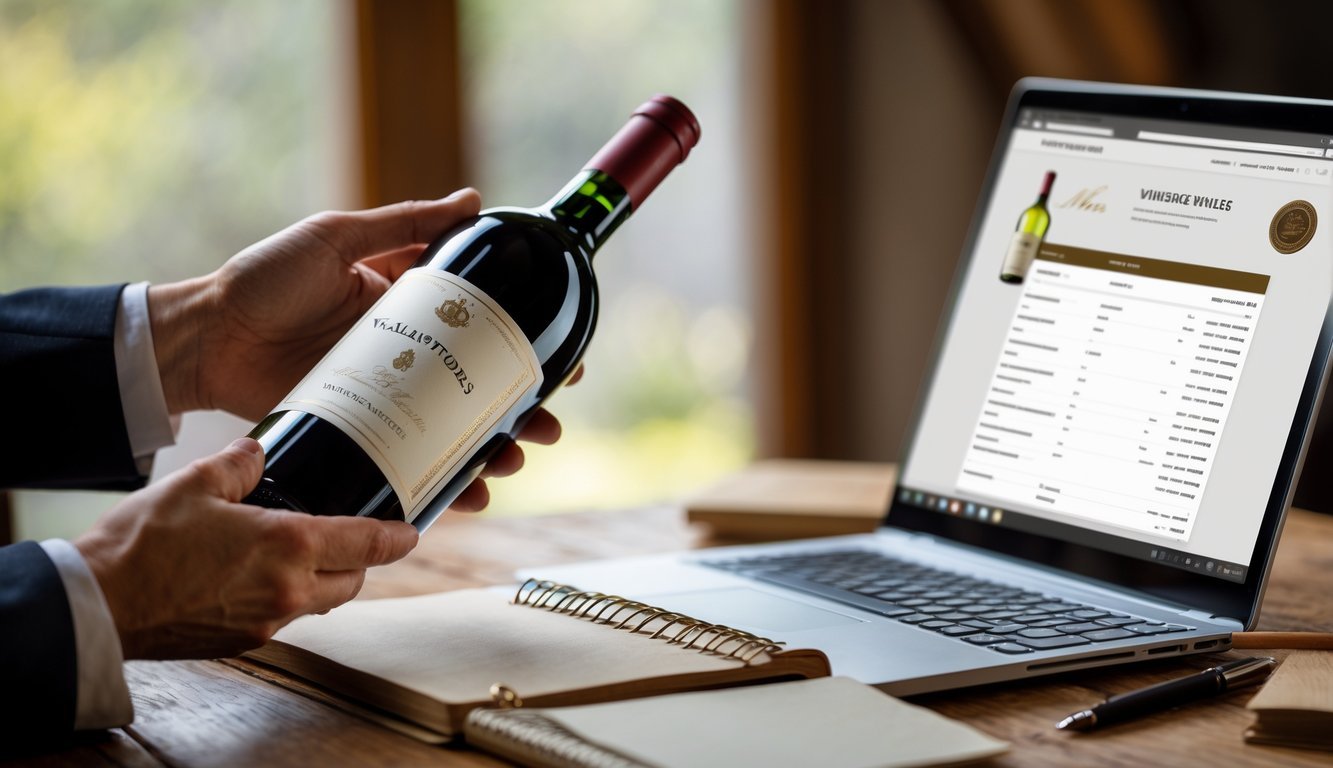
Check the vintage year on your bottle against the information on the winery’s website. Most wineries post their production dates and vintage years online.
Find the year printed on your bottle and see if it matches the winery’s records. If it doesn’t, that’s a warning sign.
Some bottles list batch numbers or codes. Use those to confirm the wine’s real vintage.
Spending a few minutes online can help you dodge fakes or mislabeled bottles. It’s worth it for peace of mind.
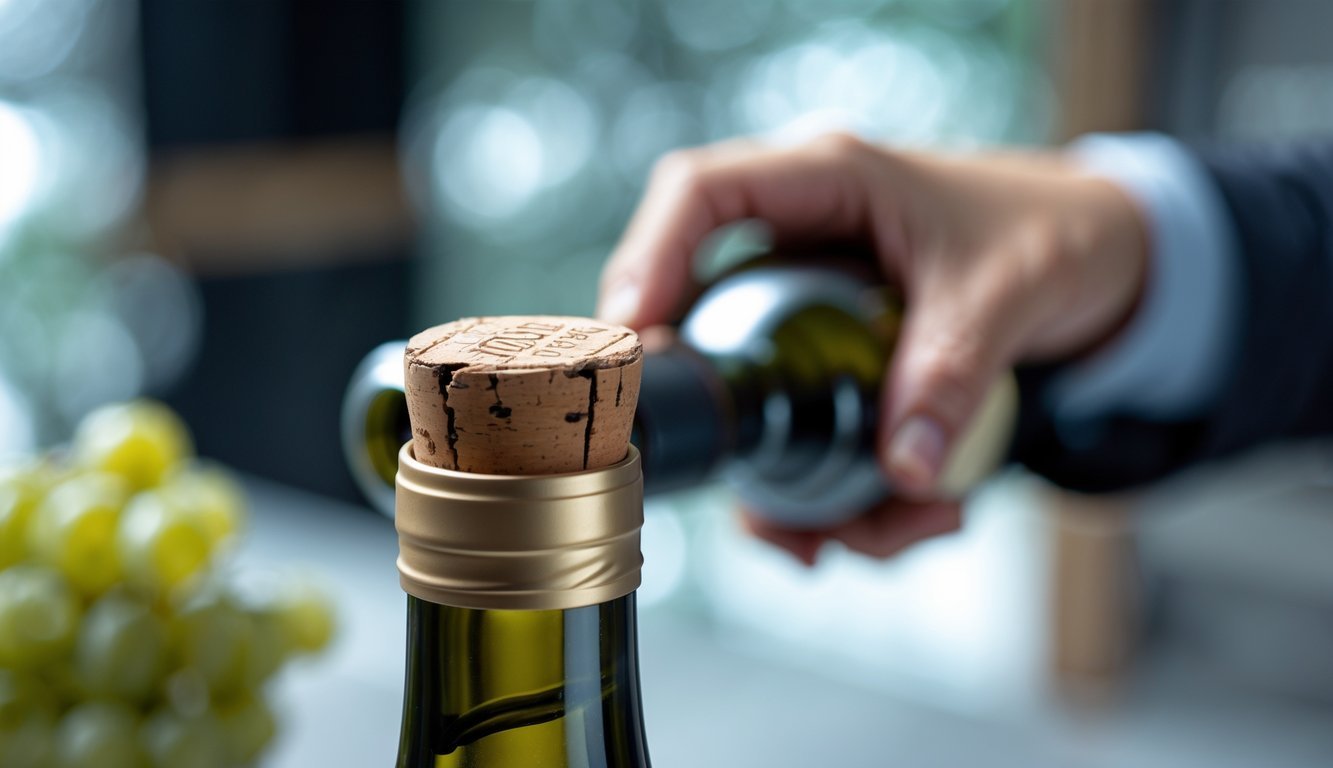
Check the capsule on top of the cork for damage or odd shapes. If the capsule looks brand new on an older bottle, that’s a little suspicious.
Take a closer look at the cork. Mold, leaks, or a cork that’s pushed down could mean someone opened the bottle before.
Carefully cutting the capsule lets you see the cork without messing it up. Some collectors do this to check if the vintage on the cork matches the label.
If the capsule or cork seems off for the wine’s age or brand, trust your instincts. Something might not be right.
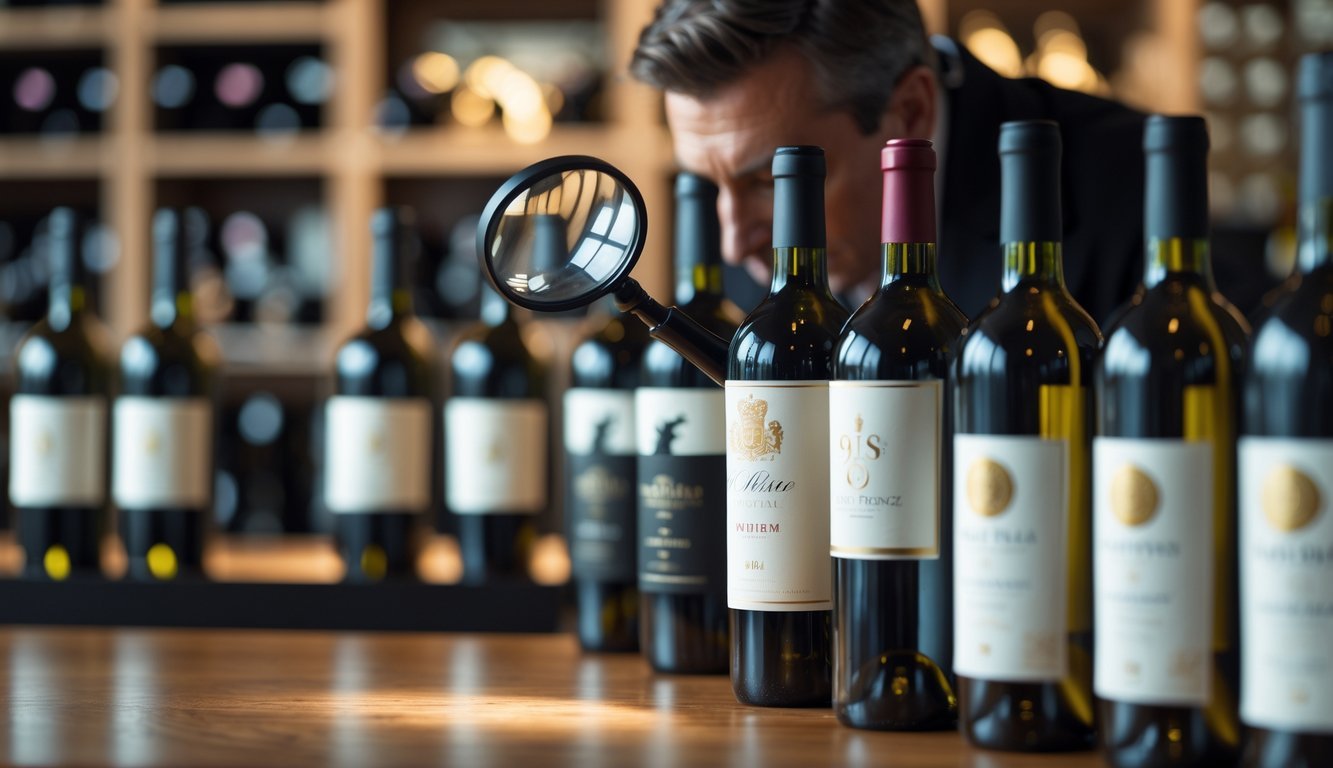
Always compare your bottle’s label to official winery photos. Most wineries post clear pictures online. Pay attention to colors, fonts, and little details.
Fake or overpriced wines often have labels that look just a bit off. Maybe the logo’s weird, the text doesn’t match, or the print quality is poor.
If something seems strange, don’t ignore it. Using official images as a reference can save you from buying a fake or overpaying.
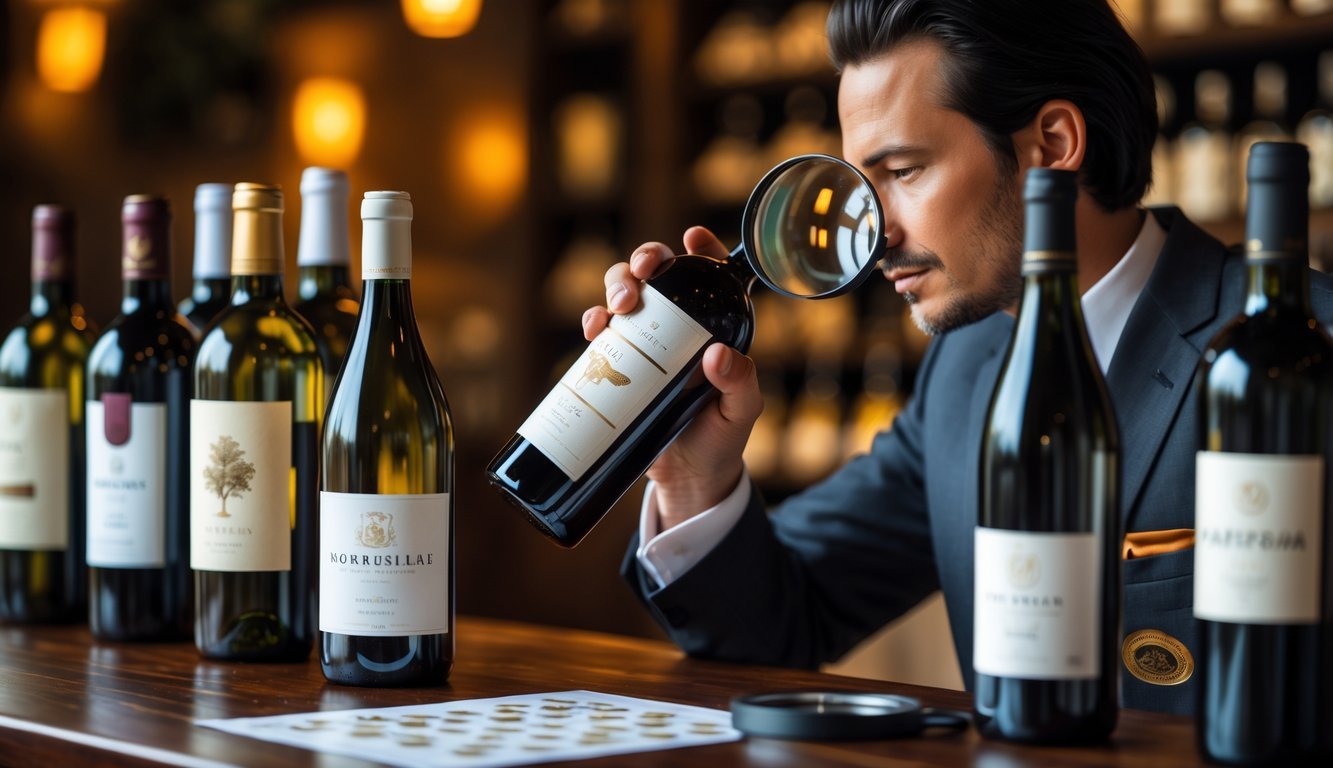
If you see a wine called a “unicorn” bottle, be careful. Sellers love to hype up rarity, but sometimes these bottles don’t even exist.
Do your research. Make sure the wine is real and has a history. If experts haven’t heard of it or you can’t find proof, it’s probably too good to be true.
Rare wines attract scammers. Don’t rush just because someone claims a bottle is one of a kind. Double-check before you spend big.
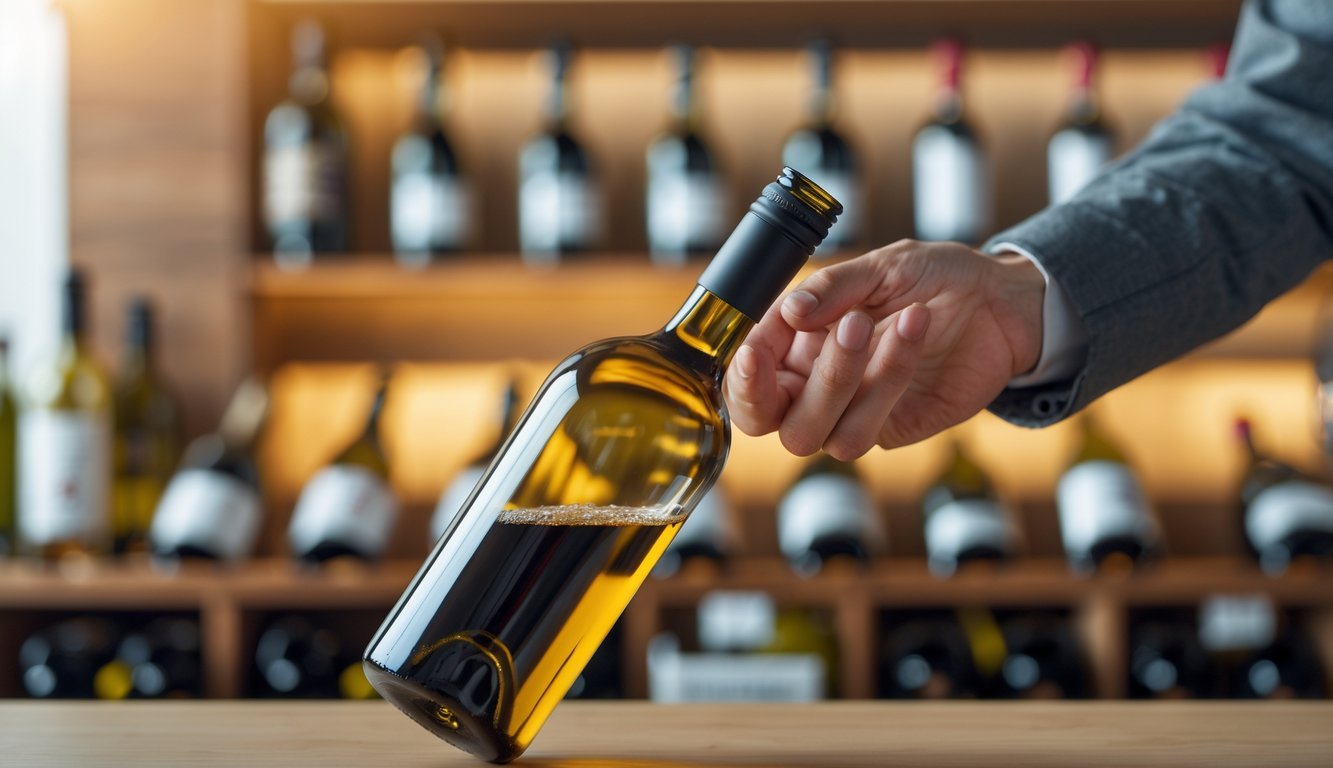
Look at the fill level in the bottle neck. Too much space means extra air, which can speed up aging or cause oxidation.
A low fill might mean bad storage or heat exposure. Older wines sometimes have lower fills, but if it’s way below the cork, that’s not a good sign.
Watch for bottles where the wine sits far from the cork. It could mean leaks or damage. Checking the fill level helps you avoid overpriced or spoiled bottles.
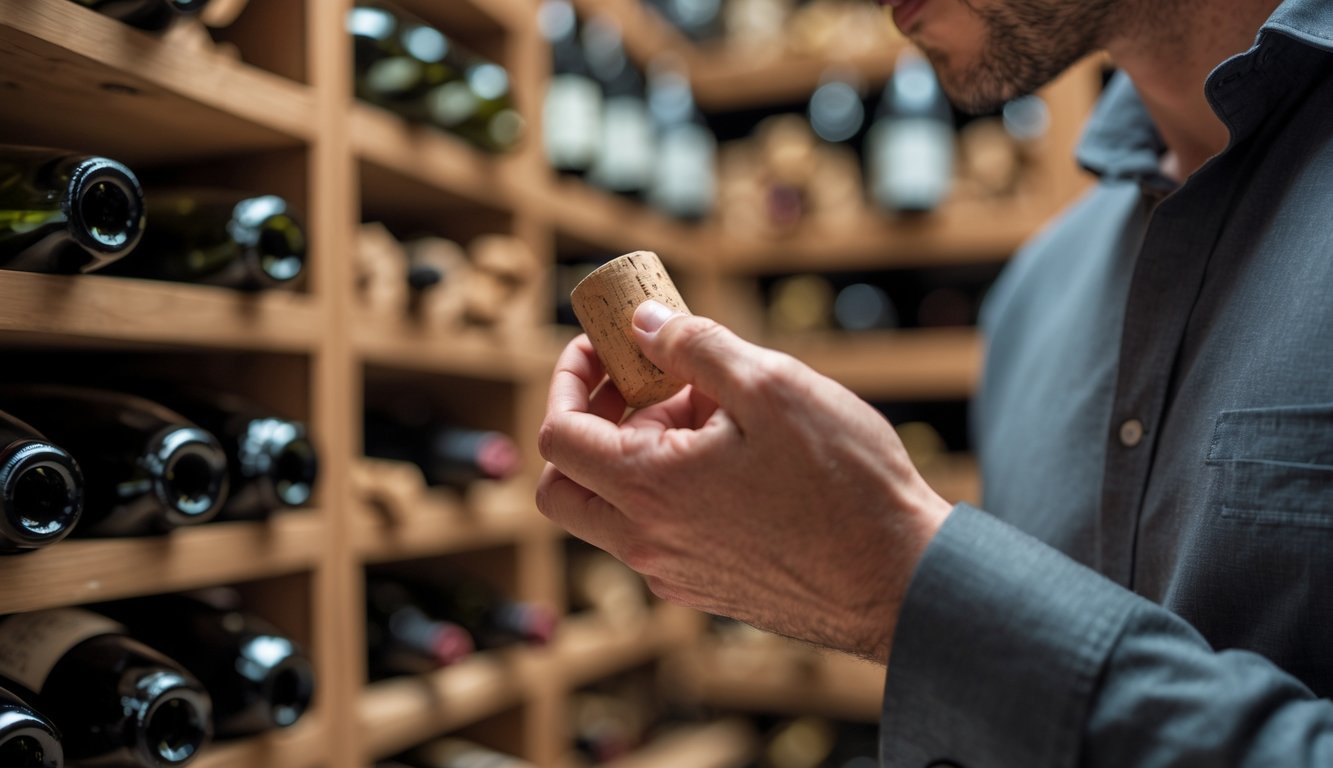
When you open a bottle, sniff the cork. If it smells musty or like wet cardboard, the wine probably wasn’t stored right.
That smell comes from TCA, a chemical that shows up when corks get contaminated. Usually, it means the wine’s going to taste dull or weirdly bitter.
Trust your nose before pouring. Smelling the cork is such a simple way to avoid wasting money on bad wine.
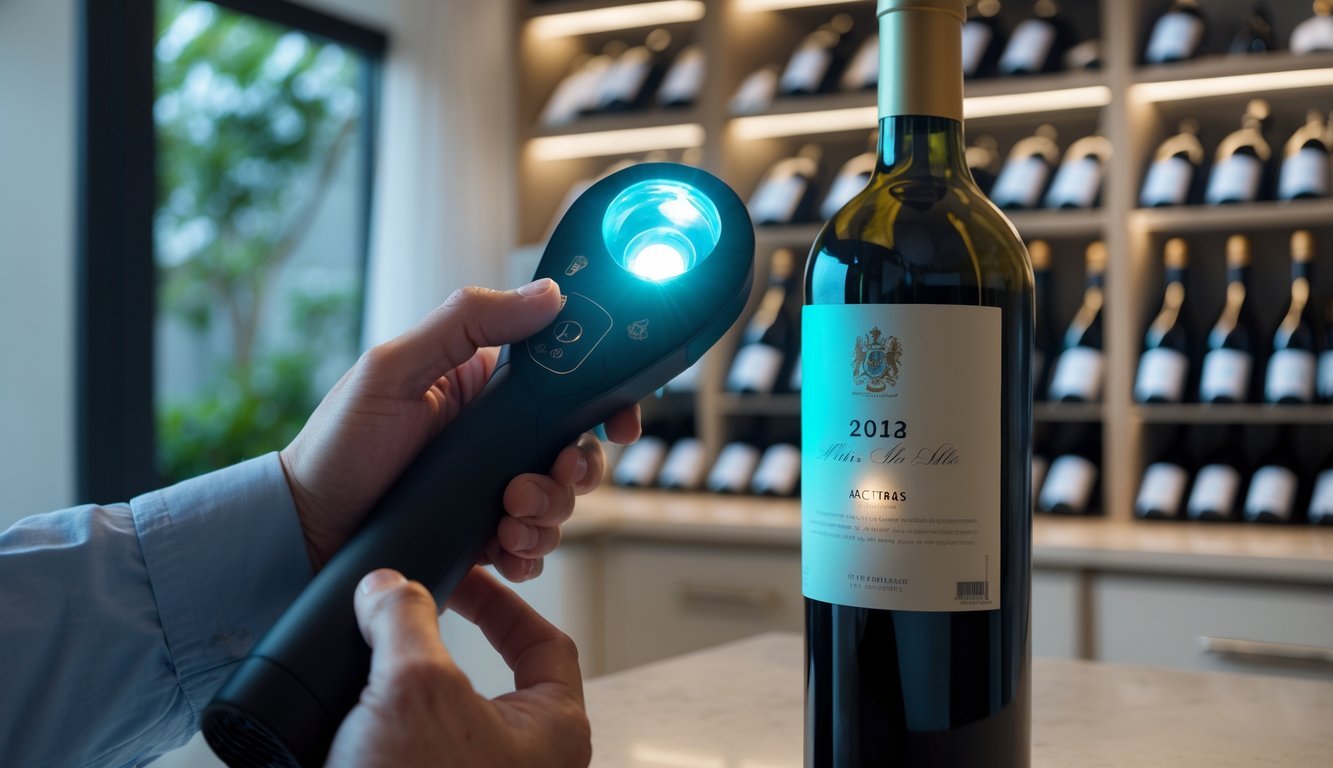
Try using a UV light to check for label tampering. Some changes or repairs are invisible until you shine a UV light on them—they might glow or show weird spots.
Certain label materials react under UV, revealing hidden marks or odd brightness. If you see uneven spots, someone may have messed with the label.
A tiny UV flashlight fits in your pocket and can save you from buying a fake or altered bottle. It’s a quick, easy trick.
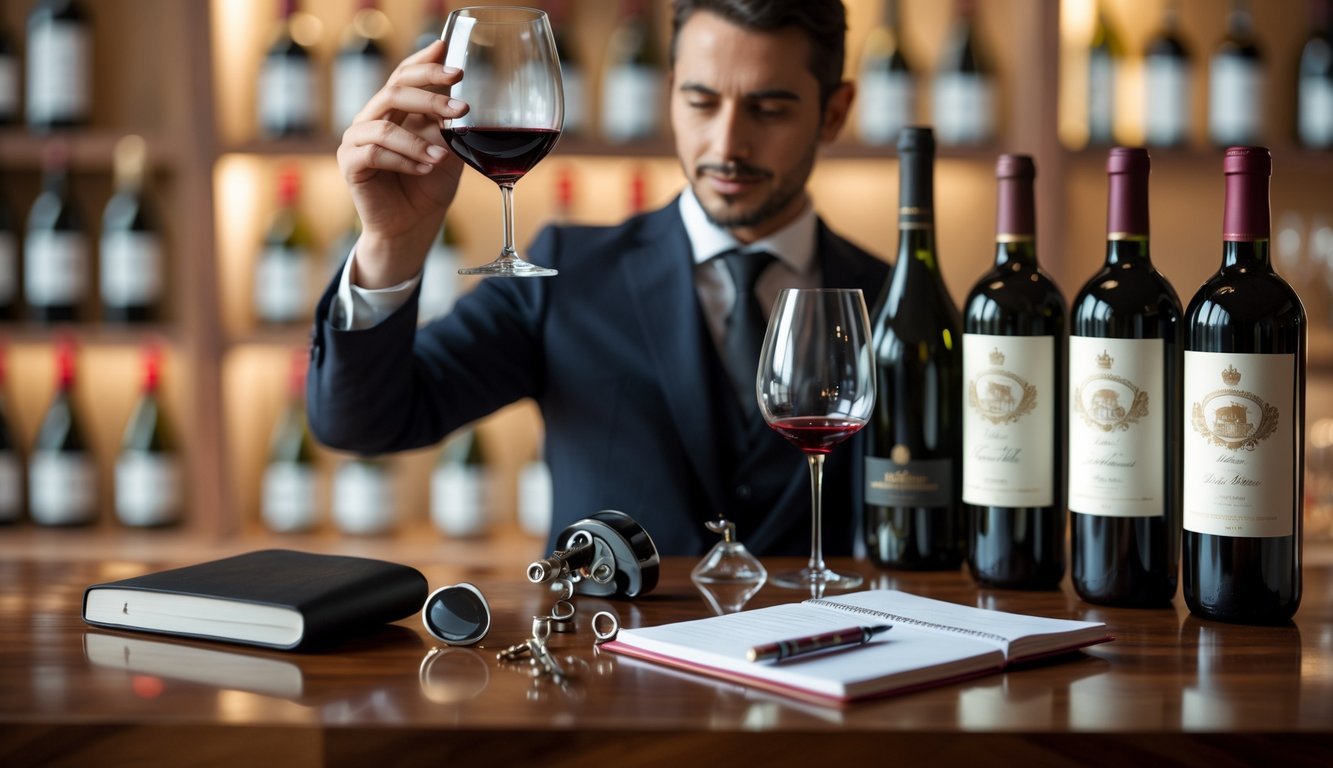
Knowing what makes a bottle authentic helps you avoid fakes and rip-offs. Real wines have details that show they’re legit. Counterfeits often have flaws you can spot if you look closely.
Start with the label when you check a wine bottle. Authentic labels have crisp printing, sharp fonts, and colors that match up. Look for correct spelling and info about the vineyard and vintage.
The bottle should feel sturdy and well-made, without signs of tampering. Check the cork and seal—wineries usually add their logo or unique marks.
Genuine wines, especially rare or pricey ones, often come with certificates or paperwork. That might include receipts or official info confirming where the wine came from.
Fake wines usually show mistakes on the label. Blurry text, misspellings, or labels that don’t fit the bottle’s style or year are big red flags.
Damaged or uneven seals could mean someone tried to open or swap the bottle. Sometimes the bottle weight or shape feels just a bit off—counterfeiters use cheaper glass or bottles from other brands.
If you see a rare wine at a suspiciously low price or with flashy packaging, be careful. If a deal seems too good, it probably is.
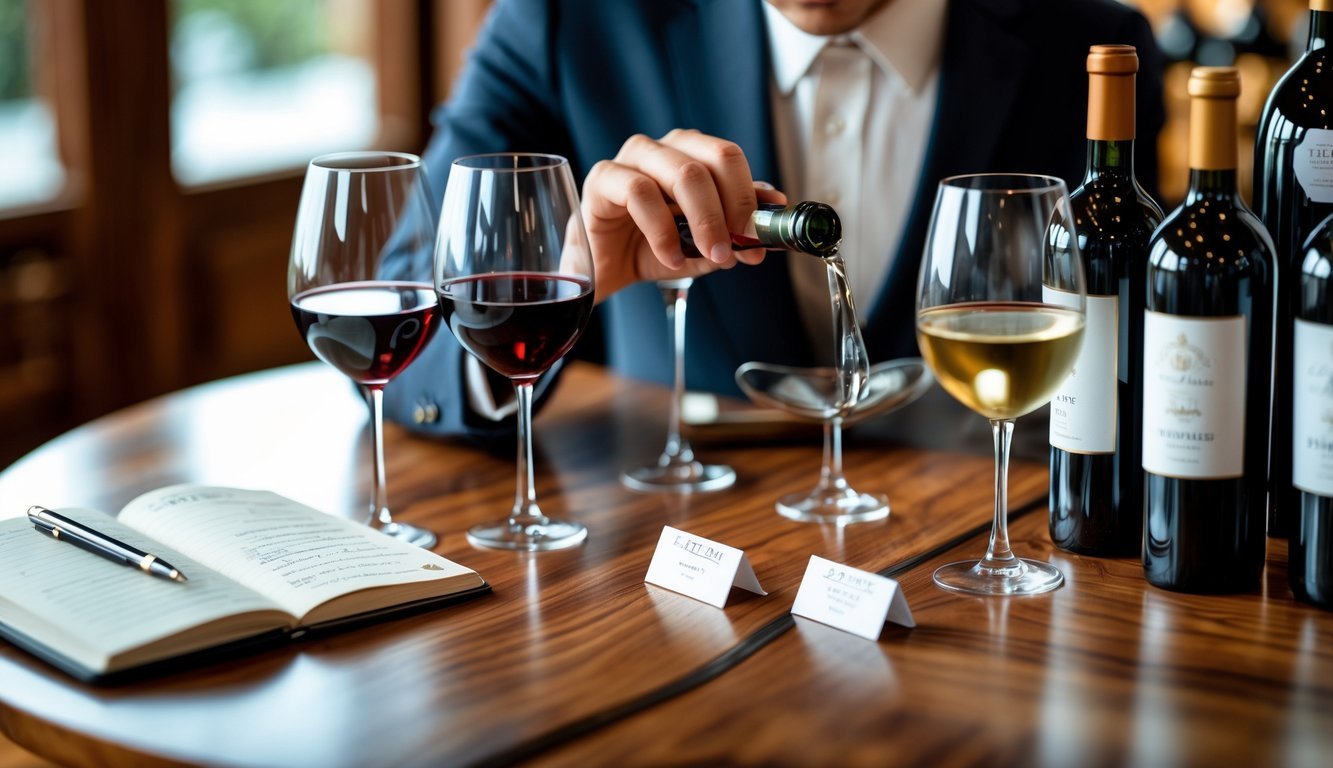
Wine prices can be confusing. You might pay a lot for a bottle that doesn’t taste special. Sometimes, the best wines are surprisingly affordable.
Understanding how pricing works helps you avoid overpaying for wine that isn’t worth it.
Some sellers slap high prices on wines to make them seem rare or valuable, even if they’re not. You’ll see bottles marked up just for the label or supposed age.
Watch for flashy packaging or big names with fuzzy origins. Sellers might bundle wines with extra shipping or storage fees, making the price jump for no real reason.
If a wine costs way more than at other shops, that’s a sign to check things out before buying.
Real factors shape wine prices—think about where the vineyard sits, the quality of the grapes, and how the producers make the wine. Wines from famous regions or rare grape varieties usually cost more, mostly because there’s less of them and producers put in extra care.
Don’t forget about the vintage year. Some years just turn out better grapes, thanks to the weather.
Awards or high expert ratings can bump up the price, too. These often signal genuine quality, though sometimes I wonder if it’s all just hype.
If you know what goes into the bottle, you can figure out whether the price actually makes sense.